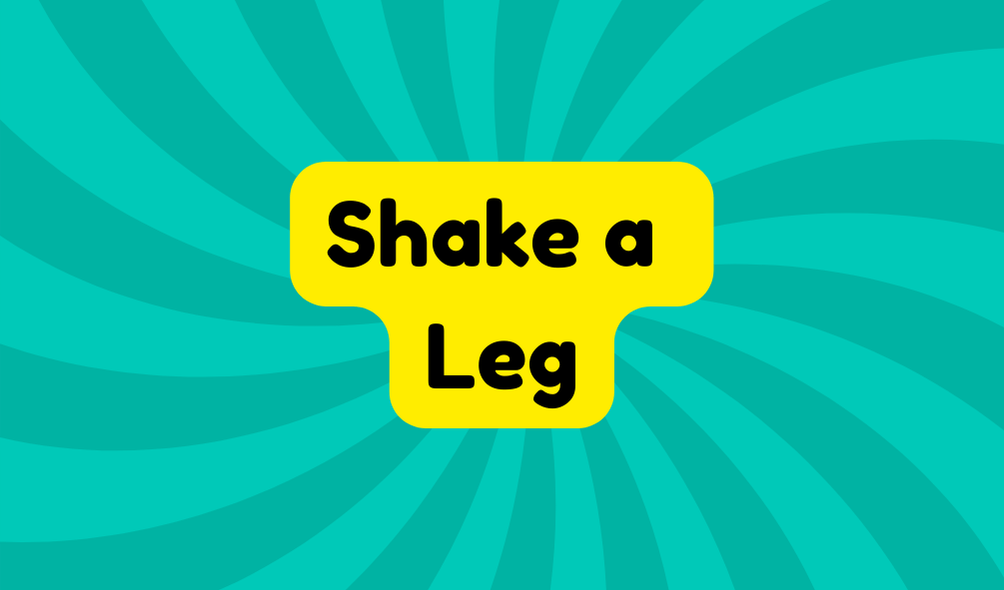"Shake a leg" is a phrase that calls for urgency, often encouraging someone to hurry. Its origins date back to 19th-century dance practices in American and British cultures, reflecting a lively, energetic spirit. The expression has various synonyms like "hustle" and "dash," which capture a similar essence. Despite cultural shifts, it remains relevant in modern conversation, tying people together through movement and action. Discovering its usage and significance can deepen one's appreciation for language.
Synonyms
When exploring the phrase "shake a leg," it becomes evident that numerous synonyms exist, each capturing a slightly different nuance of movement or urgency. Effective communication can enhance understanding of movement within contexts, whether in dance or in everyday situations. Consider the following synonyms that reflect varied degrees of swiftness:
- Hustle
- Rush
- Dash
- Gallop
These alternatives can convey a sense of urgency, inviting one to dance quickly or move swiftly, thereby illustrating the evolution of language tied to physical expression. Ultimately, familiarity with these synonyms enriches discussions about urgency, movement, and societal interactions.
Example of Sentences
Synonyms like "hustle," "rush," "dash," and "gallop" not only reflect movement but also carry a sense of urgency that can change the tone of a conversation. Effective use of the phrase "shake a leg" can illustrate various dance phrases or express urgency in different contexts, promoting a lively atmosphere. Here are four illustrative sentences:
- Granny urged the kids to shake a leg before dinner got cold.
- At the party, everyone was encouraged to shake a leg on the dance floor.
- The coach shouted, "Shake a leg, team!" as time was running out.
- The deadline loomed, so she had to shake a leg to finish her project.
Origin
The origin of the phrase "shake a leg" reveals a fascinating journey through language and culture, intertwining elements of urgency and movement. This expression initially emerged in the mid-19th century, signifying a call to dance. Its historical context illustrates connections to both American and British dance practices, as well as Australian Aboriginal culture. Cultural significance grows with related phrases like "shake your heels," highlighting how vernacular evolves. While many similar terms fade, "shake a leg" remains prominent, showcasing adaptability in language. This phrase invites scrutiny, challenging users to contemplate its varied meanings and influences over time, contributing to modern communication.
Collocations
Exploring the phrase "shake a leg" reveals not only its historical significance but also the various collocations that enhance its meaning. Understanding these related expressions can provide deeper insight into its usage and richness in language. Particularly, one may consider the following:
- Shake your booties
- Shake a foot
- Shake those hips
- Shake off laziness
Such dance expressions and urgency phrases suggest a lively momentum in communication. However, the meaning can vary depending on context and cultural shifts, reflecting how language evolves yet remains tethered to its dynamic roots. Awareness of these collocations heightens linguistic appreciation and understanding.
How to Use in Everyday Language
In everyday language, "shake a leg" serves as a lively encouragement to prompt action or movement, emphasizing urgency in a casual yet effective manner. This phrase can easily fit into a variety of contexts, from reminding friends to hurry up before a movie to motivating a team during a project. While its playful connotation brings enthusiasm, readers should consider the balance between casual urgency and respect for one's pace. By using "shake a leg" thoughtfully, individuals can integrate everyday encouragement into their interactions, enhancing communication without overwhelming others. Ultimately, it's a simple way to inspire action when needed.
Why Is It Still Relevant Today?
Although many phrases fade from common use, "shake a leg" continues to resonate in contemporary conversations, largely due to its vivid imagery and energetic implications. Its cultural significance stems from how it intertwines with modern dance movements, encouraging action and lively engagement. In a world increasingly attuned to self-expression, the phrase invites individuals to embrace rhythm and urgency. The enduring nature of "shake a leg" reflects a collective yearning for connection through movement, presenting both a challenge and an opportunity for innovation. Its relevance today highlights society's ongoing appreciation for language rooted in cultural experiences of dance and motion.







